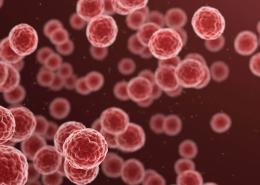Can You Inherit Rheumatoid Arthritis? Genetic vs Hereditary

Inflammation that leads to pain, swelling, stiffness, fatigue, and loss of joint function, are a fact of life for more than one million people in the United States who live with rheumatoid arthritis (RA).1 The chronic autoimmune disease causes the immune system to attack the healthy tissues surrounding the joints; it mainly affects the wrists, hands and knees (and often attacks numerous joints at once).2
Is rheumatoid arthritis genetic? In addition to risk factors such as age, sex, smoking and obesity, genetics and heredity also appear to play a role in rheumatoid arthritis: Several genetic markers have been linked to RA and the disease tends to cluster in families–and understanding the role that genetics and heredity play in RA increases the odds that patients can be diagnosed earlier and receive more effective, tailored treatment options.1
Genetics and RA
Many autoimmune diseases, like RA, have a genetic basis, which means people with certain genetic markers have a slightly higher chance of developing the disease.3 There is no single rheumatoid arthritis gene. Rather, researchers have identified the location of more than 150 locations that are associated with RA that, coupled with environmental factors, increase the risk of developing the disease.4
The rheumatoid arthritis genetic markers include STAT4, TRAF1/C5, and PTPN22. STAT4 is a gene that regulates and activates the immune system. STAT4 mutations also occur in autoimmune conditions like lupus.5 TRAF1/C5 genes play a major role in causing chronic inflammation.5,6 And in Caucasian patients, the PTPN22 gene encodes specific immune cells to support immune cell responses, influencing the progression and expression of RA. It’s among the top genes linked to RA risk.5,6
One gene stands out from the rest: HLA-DR4. This gene, also known as Human Leukocyte Antigen or the major histocompatibility complex (MHC) is most commonly associated with RA, according to Xinli Hu, MD, PhD, director of computational genetics a senior computational geneticist in Systems Immunology at Pfizer. People who have this gene are more likely to develop RA than those who do not.5
These HLA genes encode for proteins that normally help the immune system distinguish 'self' from pathogenic cellular materials (such as proteins found in viruses and bacteria). Outside of the HLA genes, the majority of involved genes also function within the immune system Although understanding rheumatoid arthritis genetic markers can help shed light on the condition, Hu notes that not everyone with these genes will develop RA, and not everyone with RA has these genes. More research is needed to understand how it develops in some people, but not others.7
Heredity and RA
“Does RA run in families?” is a common question–and the answer is yes. There is an inherited component to RA. Research shows that the disease rate is 0.5% in the general population and 0.8% among those with a family history of RA; genetically European people with RA are at least twice as likely as unaffected people to carry the HLA-DR4 gene. A study conducted on identical twins, found that if one twin has RA, there is a 12-15% chance the other one will also have it.This only occured in 4% of nonidentical twins.8
"RA, like many autoimmune diseases, is quite heritable and unfortunately tends to cluster in families," says Hu. "Many genetic studies have gone into identifying genes that predispose individuals to the risk of RA."
In short, family history plays a role in developing RA–and heritability may even impact the disease outcomes because certain gene profiles have been linked to response (or non-response) to treatments.9 However, factors such as age, gender assigned at birth, and smoking contribute as well.2
Environmental and behavioral risk factors
Evidence suggests that environmental factors may also play a role in RA as our genes and family history. In fact, the latest research shows that the risk of developing RA is linked to a combination of genetics, family history, and environmental triggers. It’s been called the “Bermuda triangle” of genetic and environmental factors and immunity triggers that are underlying an RA diagnosis.9 Even so, it is possible for someone to have the genetic markers for RA, but they haven’t been “switched on,” so to speak and the disease take hold unless something triggers that switch.10
Several non-genetic risk factors may contribute to RA.2,10 For instance, risk for RA has been shown to increase with age. The condition is highest among adults in their 60s and older. But Hu explains that the connection to age is a bit nuanced. "RA that occurs (with age of onset) after age 60 tends to be clinically and demographically quite different, and is known as elderly-onset RA or late-onset RA. In any case, [the age connection] may not be as linear as we think, though there is definitely a peak of onset concentrated in the 30-50 range (it’s within this group that female: male ratio is much higher)."
The rates of RA are also two to three times higher among those assigned female at birth.2 Multiple studies show that smoking significantly increases the risk of RA and could worsen the disease severity.2 And obesity also increases the risk of RA. The more overweight someone is, the higher the risk of developing the disease.2
Treatment Advances & Research
Although there is no cure for RA, early diagnosis is critical. Rheumatologists may suggest medications that can help slow the progression of the disease and prevent joint deformity. In addition to medication, rheumatologists may also recommend physical and occupational therapy and/or surgery (joint replacement surgery). Lifestyle modifications like regular exercise, stress management, and weight loss can also help reduce RA symptoms and help with pain management.7
"There are two broad types of research aimed at understanding the link between genetics and RA," says Hu. "One is identifying genetic variations across the genome that are associated with the risk of disease, and the other is investigating the biological consequences of such genetic changes in cells, tissues, and organisms."
Analyzing RA’s genetic markers has helped researchers better understand which genes could be targeted for treatments. The latest study found that a novel hub gene known as glutathione peroxidase 3 (GPS3) could serve as a potential biomarker for the diagnosis and treatment of RA.11
Clinical trials may also offer some hope. These trials are actively working to understand RA better and to develop newer, more advanced treatment options. These ever-evolving insights into the genetics and heredity of RA will increase the odds of developing and tailoring treatments to help those living with the disease.
![]()





